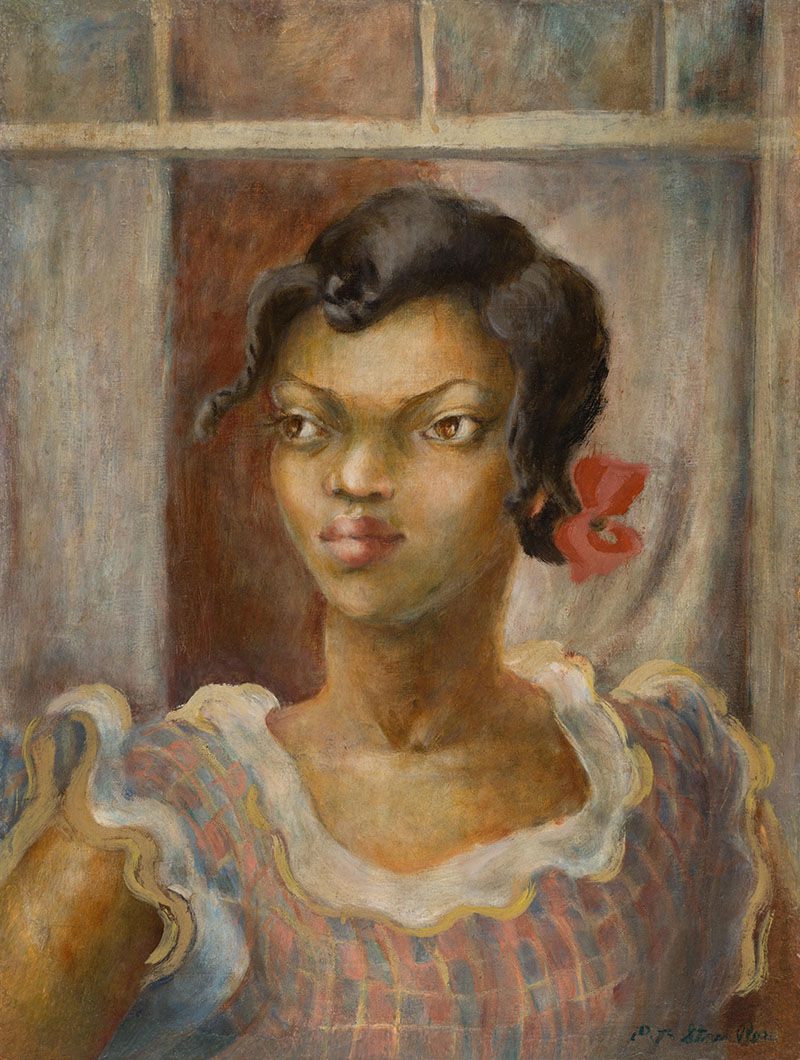Art Sheds Light on History
January 4, 2017 | By Tim Pratt

In the early 20th century, a teenager named Ruth Starr moved with her family from a lumber town in Wisconsin to a former tobacco plantation on the Eastern Shore of Maryland.
The teen described the great house, named “Hope House,” as one that was bustling with African-American servants, where banjos strummed in the kitchen while cornbread and fried chicken browned on the stove. She had been thrust into a “world of fairy tale,” she said in a speech in 1930, years after she had married and taken the last name “Rose.”
But it was also a world of prejudice and segregation, of poverty and distrust.
Yet Rose, who came from a wealthy white family, didn’t shy away from the African-American community that surrounded her. She immersed herself in it and eventually created a collection of artwork that depicted life in the historically black towns of Copperville and Unionville.
Dozens of those pieces of art will be on display from January 11 to February 26 in the Mitchell Gallery at St. John’s College in Annapolis.
“We are definitely excited by it,” says Mitchell Gallery Art Educator Lucinda Edinberg. “To have something of local subject matter that’s historical, and of this caliber, we don’t have that here very often.”
This first comprehensive exhibition of paintings and lithographs by Rose (1887-1965) offers a rare glimpse into the lives and spiritual world of African-Americans at the turn of the century in rural Maryland.
Rose portrays crab pickers, sail makers and soldiers, as well as gospel song illustrations and images of small-town life. Her subjects included local descendants of Frederick Douglass and Harriet Tubman.
“She was really a ‘regionalist’ for Maryland because her topics are local, of everyday life, and she doesn’t glorify her subjects,” Edinberg says. “In that respect, I think there’s a lot of honesty to her work.”
Rose formed a close circle of highly successful artist friends throughout her life, but also maintained relationships with those in the community. Her work as an artist achieved modest success.
It was years after her death that her work started to receive more attention and collections started to form.
The exhibit that will be shown at St. John’s, “Ruth Starr Rose: Revelations of African American Life in Maryland And The World,” was developed and organized for the Reginald F. Lewis Museum in Baltimore by guest curator Barbara Paca.
The exhibit already has been displayed in Baltimore, Easton and Salisbury. After Annapolis, it will travel to Hagerstown.
An opening reception is scheduled at St. John’s from 3-5 p.m. on January 15. Edinberg will give a tour of the exhibit, followed by a musical performance and refreshments.
On February 1, Edinberg will give a gallery talk on the exhibition during the “Art Express Lunchtime Tour.” The event runs from 12:15-12:45 p.m.
That same day, the public is invited to join members of the Mitchell Gallery Book Club for a docent tour of the exhibit followed by a discussion of “Narrative of the life of Frederick Douglass, an American Slave,” written by Douglass. The event runs from 2:30-4:30 p.m. St. John’s tutor Tom May will lead the discussion. Registration is required. Call 410-626-2556 to register.
On February 8, Paca will give a lecture called “Labor of Love: Ruth Starr Rose and the Miracle of her Shared Community” at 5:30 p.m. in the Conversation Room, across from the Gallery in Mellon Hall. Mitchell Gallery members are invited to a wine and cheese reception with the curator immediately following the lecture.
On February 19, Edinberg will lead a tour of the exhibit at 3 p.m.
Students from schools throughout the county also are planning to view the exhibit. It is free and open to the public.
“There are a lot of people excited by this exhibit,” Edinberg says. “There are a lot of stories to tell.”

